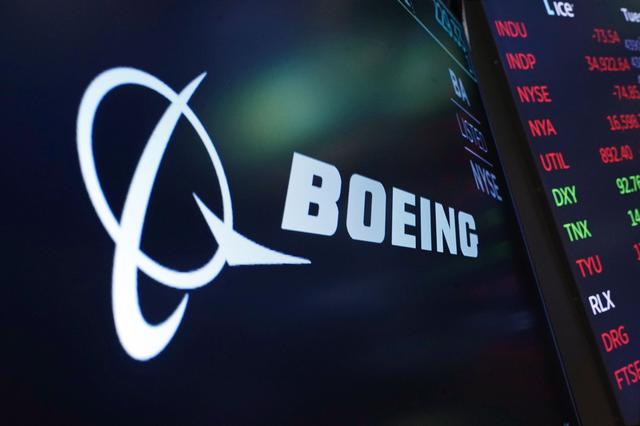Happenstance had nothing to do with Amazon’s selection of Arlington, Virginia, for its second headquarters in 2018 or Boeing’s announcement last week that it will relocate its headquarters there. County government departments play an important role in attracting major technology companies by offering tax incentives, access to dark fiber and deep talent pools. The underlying reason for the effort is the betterment of all stakeholders, experts say.
“We talk a lot about public/private partnerships. It’s really not that. We’re orchestrating an ecosystem, where, basically, government and private, government, commercial, education, higher ed are all collaborating in a way that benefits one another,” said Jack Belcher, chief information officer for Arlington County. “It’s really determining how each of us can develop win-win situations.”
One of those situations is the plan to make National Landing—the area where Amazon HQ2 is being built—into the country’s first 5G smart city “at scale,” according to a statement from AT&T. The telecom giant and JBG Smith, a real estate investment trust that owns much of the property in National Landing, partnered to expand the area’s connectivity through side-mounts, street furniture and underground network infrastructure.
“As a municipality, our goal was to accelerate the launch of that innovation district and because we had made the investment in putting the fiber in the ground years ago, it really did save a lot of time and a lot of money in terms of JBG Smith and AT&T being able to move forward with the creation of this 5G smart city,” said Telly Tucker, director of Arlington Economic Development (AED), part of the county government.
Last summer, the Arlington County Board approved an Indefeasible Rights of Use Agreement with JBG Smith to use a share of county-owned excess dark fiber and conduit access for at least 75 years in National Landing. That will provide reliable access to high-speed wired or wireless, including 5G data transmission. In exchange for that access, the company will help fund the county’s digital equity goals with $2.8 million upfront and another $700,000 when connection is established to another section of dark fiber.
Another aspect of the deal with Amazon includes a $1 billion-plus investment by the state in technology education. In 2019, then-Virginia Gov. Ralph Northam signed an agreement with 11 universities to create the Tech Talent Investment Program (TTIP) with the goal of conferring 31,000 more bachelor’s and master’s degrees in computer science in the next 20 years. Additionally, the state allocated $168 million toward the construction of Virginia Tech’s Innovation Campus, situated near National Landing, and George Mason University got $235 million through TTIP to expand its Arlington campus to house the Mason Institute for Digital InnovAtion.
“It’s been a very intentional and focused strategy,” said Tucker, whose last day at AED is May 27. “I think one of the things that the Virginia team that recruited Amazon found was that traditional financial incentives didn’t really differentiate us from other states, but we looked at how we create an incentive such that it supports their continued growth here and really drives their profitability. That’s why we made the investment in tech talent.”
The Fairfax County, Virginia, Economic Development Authority (FCEDA) allied with 10 jurisdictions in Northern Virginia to create workinnorthernvirginia.com, a hub that connects tech companies with job-seekers. It started in 2020 with about 30 companies and 40,000 open positions, and got about 7,500 hits in its first month. Today, it gets 45,000 hits a month, advertises more than 150,000 jobs in the area and works with 170 companies.

“You can see the companies being attracted because the talent is here, and then the talent being attracted because the company is here,” said Victor Hoskins, president and chief executive officer of FCEDA. “Local government and state government create the environment for these tech companies to thrive. You can have an environment that supports tech entrepreneurships like our tech campuses … but the local government’s ability to allow them to do creative things with their space.”
Fairfax is home to 8,800 tech companies, including heavy-hitters such as Appian and Ridgeline International, but one of its big draws is cloud, Hoskins added. Thirty-two data centers sit within its borders—and 100 more are nearby in neighboring Loudoun County. “Now, cloud is not only available but richly available,” he said.
In Miami, efforts are under way to bring in cryptocurrency and blockchain companies after the city commission voted last year to make Bitcoin an option for paying city workers, and Mayor Francis Suarez introduced MiamiCoin, a cryptocurrency powered by the Stacks Protocol, which enables smart contracts on the Bitcoin network. Miami crypto startups have attracted about $838 million of U.S. venture capital investment since 2019, according to a Bloomberg report that cites PitchBook data.
Last month, the South Florida city was the site of the eMerge Government Summit 2022, hosted by the U.S. Conference of Mayors and eMerge Americas, a venture-backed platform focused on transforming Miami into the tech hub of the Americas.
“Miami is trying to be as friendly as possible for folks to come here, relocate and open up shop,” said Felice Gorordo, CEO of eMerge Americas. “One of the ways that we do that is by convening all the stakeholders that make up any successful and thriving ecosystem—from academia to accelerators and incubators and government.”
And just as tech companies’ growth doesn’t happen in a vacuum, they are not the only ones that benefit from government-supported efforts to attract businesses. For every one tech job that Amazon HQ2 would bring, Mason economist Stephen Fuller determined it would create four more in other industries, said Hoskins, who was director of AED from 2015 to 2019 and designed “The Way Forward Strategy” that resulted in winning the Amazon HQ2 bid.
“One of Arlington’s goals in investing, particularly in the dark fiber, was to create infrastructure for future needs and that spans access to other critical network infrastructure, including trying to bridge the digital divide,” Tucker added. “We think about access to broadband as important as every other utility—water, electricity, etc. One of the goals that is an indirect benefit, I think, of investing in tech is we will have the capability and capacity to connect more neighborhoods within Arlington, more students.”
Arlington CIO Belcher is looking at how current and future investments in things like cloud, edge computing and “wired/wireless convergence,” in which a wireless signal can translate into a Wi-Fi one, can both benefit county residents and attract more tech companies.
“You’ve got to have a vision of what you want to achieve, and it’s not just put up the Amazon sign on an empty building…. The vision is going to say, ‘What are you trying to achieve here?’” Belcher said. “The way we look at it is my department is a technology company in the business of government.”
Stephanie Kanowitz is a freelance writer based in northern Virginia.




